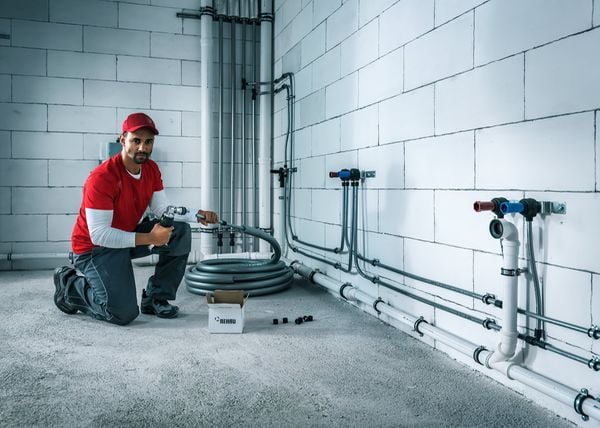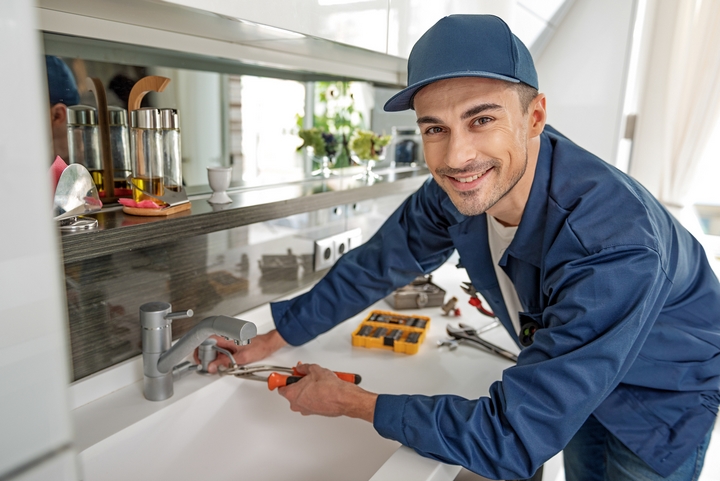The of Plumbing: Developments and Breakthroughs Approaching
The of Plumbing: Developments and Breakthroughs Approaching
Blog Article
Were you trying to locate answers around 7 Plumbing Industry Trends You Need To Know?

Intro
The plumbing industry is undertaking a transformative phase driven by technological improvements and expanding concerns for sustainability and effectiveness. This post discovers arising patterns and developments shaping the future of plumbing.
Regulative Landscape
Regulatory frameworks play a crucial role in shaping the adoption of plumbing advancements, with requirements and codes governing whatever from water efficiency to product security. As innovations remain to advance, regulatory bodies need to adjust to guarantee consumer protection and ecological stewardship.
Future Expectation
The future of plumbing is defined by proceeded technology and assimilation with various other markets such as IoT, renewable resource, and structure automation. By accepting lasting methods, leveraging arising innovations, and focusing on user-centric design, the pipes industry is poised to deal with the progressing needs of culture while lessening its ecological impact.
Augmented Fact in Pipes
Augmented Fact (AR) innovation is transforming pipes by giving service technicians with real-time visual guidance for repairing and repair tasks. AR-enabled clever glasses or mobile applications overlay electronic details onto the physical atmosphere, assisting plumbers envision pipeline designs, identify concealed leakages, and perform repair services with accuracy.
Impact of 3D Printing
The advent of 3D printing has presented new opportunities in making pipes parts. From custom-designed components to elaborate pipeline fittings, 3D printing enables fast prototyping and on-demand manufacturing, lowering preparations and allowing higher customization in pipes layout.
Health and Safety Characteristics
In feedback to enhanced concerns for health and wellness, plumbing components are incorporating attributes such as antimicrobial surfaces, touchless operation, and self-cleaning devices. These innovations not just improve hygiene yet additionally promote customer comfort and benefit.
Hygiene-focused Fixtures
Touchless taps, self-sanitizing commodes, and antimicrobial surfaces are ending up being significantly prevalent in household and business settings, minimizing the threat of germ transmission and advertising a cleaner, much healthier environment.
Water Quality Monitoring
Improvements in water top quality surveillance technologies enable homeowners to keep track of the purity and security of their water system in real-time. Smart water high quality sensors can spot pollutants, pH levels, and temperature variants, empowering customers to take aggressive procedures to make certain water safety and security.
Remote Pipes Solutions
Remote diagnostics and virtual assistance are changing the way pipes services are delivered. Via video clip conferencing and remote accessibility innovations, plumbing professionals can troubleshoot problems, provide guidance for do it yourself fixings, and also perform remote assessments, supplying higher access and comfort to property owners.
Difficulties and Opportunities
While pipes innovations hold enormous assurance, they additionally existing difficulties such as information privacy issues, governing conformity, and the requirement for labor force training. Addressing these challenges requires collaboration in between industry stakeholders and regulative bodies to guarantee safe and accountable execution of new innovations.
Smart Plumbing Systems
Incorporating clever innovation right into pipes systems allows remote tracking, leakage detection, and automated upkeep. Smart sensing units and IoT (Web of Things) tools enable property owners and plumbers to monitor water usage and detect concerns in real-time, causing a lot more efficient source monitoring and proactive upkeep.
Water Efficiency Solutions
With increasing emphasis on water preservation, cutting-edge services are being established to lessen water wastefulness in pipes systems. High-efficiency fixtures, greywater recycling systems, and clever irrigation controllers are amongst the modern technologies helping customers lower their water impact while keeping convenience and ease.
Lasting Products
The shift towards sustainability reaches plumbing products, with a growing choice for environmentally friendly options. Naturally degradable piping products, such as PEX (cross-linked polyethylene) and HDPE (high-density polyethylene), offer longevity and resistance to rust without compromising environmental honesty.
Predictive Upkeep
Predictive maintenance strategies leverage information analytics and artificial intelligence formulas to expect and avoid pipes issues prior to they happen. By analyzing historic information and performance metrics, anticipating maintenance formulas can identify patterns and abnormalities, enabling positive treatments to prevent costly repair services and disturbances.
Final thought
To conclude, the future of pipes is specified by a merging of modern technology, sustainability, and user-centric layout. By welcoming clever solutions, lasting materials, and proactive upkeep methods, the plumbing market can improve efficiency, advertise security, and contribute to a much more sustainable future.
Plumbing Industry Trends You Need To Know
Smart technology in plumbing
Homeowners want to be able to manage their homes from their phones. The technology exists to make that happen. From smart toilets to leak detector devices, the whole plumbing system can be managed on an interconnected network made up of sensors, IoT devices, and machine learning algorithms.
This allows for wireless control to turn appliances on and off, automate routines, and access advanced monitoring to track water usage and flag potential issues. Smart technology streamlines water consumption, maintenance and energy usage, creating a more efficient system.
Green plumbing
The data analysis possible with smart technology not only improves convenience and cost-effectiveness but also fulfills a high-priority customer desire – sustainability. Consumers are very aware of their impact on the planet and want plumbing solutions to reduce damage and support sustainability. Eco-friendly plumbing solutions are already starting to emerge.
Customers can opt for low-flow toilets, water-saving faucets, and connections to sustainable energy sources. Beyond monitoring water consumption, customers can conserve water through the installation of greywater systems. This is a system that collects water that has been used but is still clean enough for some household uses such as toilet flushing.
Shorter product pipeline
To keep up with modern plumbing, plumbers need modern tools that enable them to complete jobs more efficiently. One technology making strides in this area is 3D printing. By 3D printing key plumbing fixtures, plumbers can reduce wait times even for specialized fixtures. It minimizes delays often seen in traditional manufacturing that frustrate customers and prevent plumbers from taking on more work.
Off-site repairs
Augmented reality is making a splash in many industries including plumbing. Plumbers can map a building online so they can explore the plumbing system through augmented reality, identifying areas of maintenance and repair completely digitally. This technology can be applied quite widely in plumbers’ work including planning installations and training new recruits. It’s safer, smarter and more efficient.
Low-footprint materials
Another way for plumbing companies to reduce their environmental footprint and meet the customer demand for sustainability is by using recycled materials in their work. The products they source and manufacture such as pipes, fixtures and faucets can be made from recycled materials. This saves the planet while being just as effective.
Onsite water purification
Additionally, plumbing companies can be advocates of water conservation and ease the financial and environmental concerns of customers by offering water purification systems. New water purification technology such as reverse osmosis systems and UV systems make it possible for homeowners and business owners to thoroughly cleanse water, removing contaminants onsite. This means the water can be safely reused in more ways than greywater can be, establishing a water recycling loop.
Tankless water heaters
Another innovation of modern plumbing is tankless water heaters. The idea is that the water is heated on demand as it runs through the system instead of being heated in a water tank. This is more energy efficient and therefore cost-effective and eco-friendly because water isn’t heated needlessly.

I am just very intrigued by Innovative Plumbing Trends Transforming Construction and I'm hoping you appreciated the new blog entry. Feel free to take the time to promote this content if you enjoyed it. I cherish reading our article about .
Book Report this page